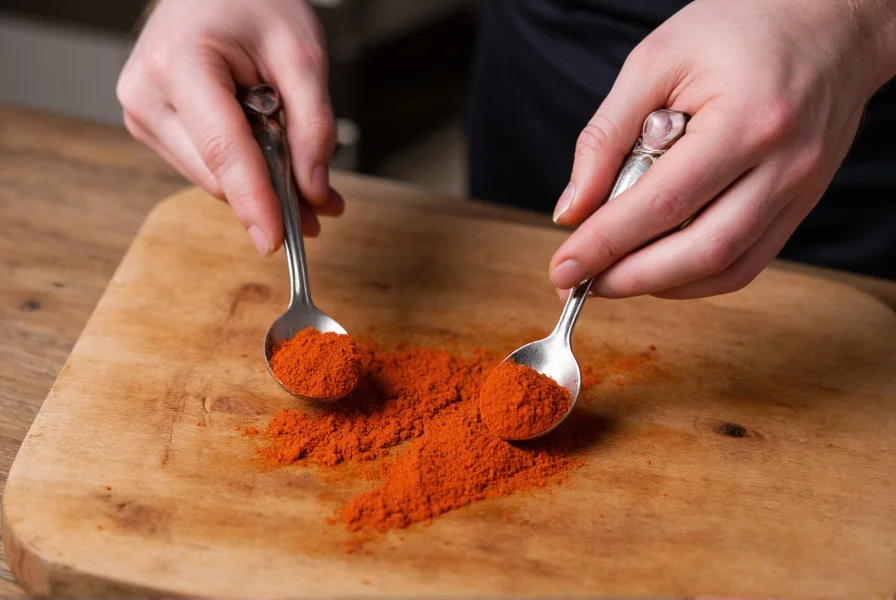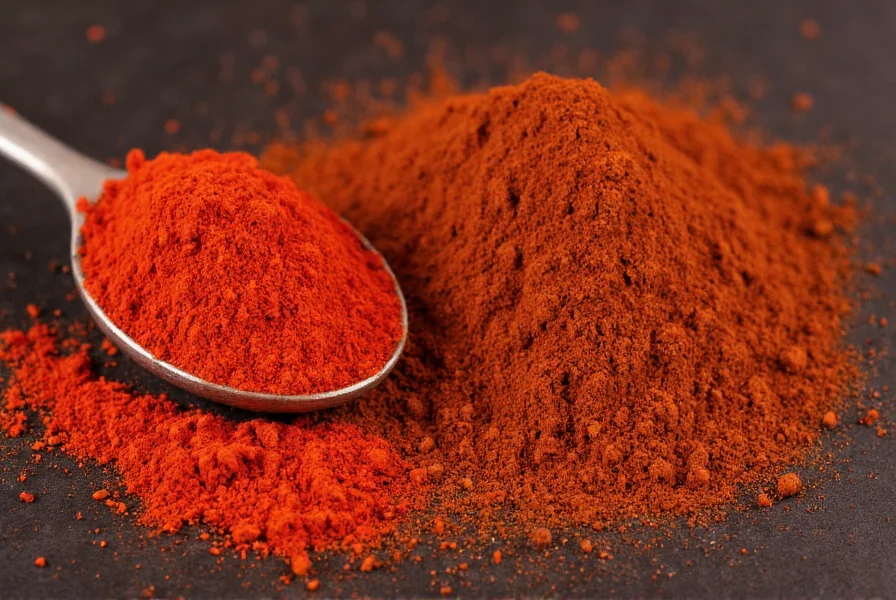When exploring spice cabinets, many home cooks wonder: is cayenne pepper and chili powder the same? This common culinary confusion can significantly impact your cooking results. While both deliver heat to dishes, they possess distinct flavor profiles, ingredient compositions, and culinary applications that every cook should understand.
What Exactly Is Cayenne Pepper?
Cayenne pepper refers specifically to the ground form of cayenne peppers, a type of Capsicum annuum chili pepper. These slender, tapering peppers typically measure 30,000-50,000 Scoville Heat Units (SHU), placing them firmly in the hot category of the chili spectrum. Pure cayenne pepper contains only one ingredient: dried and ground cayenne peppers.
The resulting powder has a bright red color and delivers a clean, straightforward heat with subtle fruity undertones. When you purchase "cayenne pepper" from reputable spice brands, you're getting a single-ingredient product without additional seasonings. This purity makes it ideal when you want pure heat without competing flavors.

Understanding Chili Powder Composition
Chili powder, despite its name, is rarely just ground chili peppers. In the United States, commercial chili powder is typically a seasoning blend containing multiple chili varieties along with complementary spices. A standard chili powder blend might include:
| Typical Chili Powder Ingredients | Percentage Range | Flavor Contribution |
|---|---|---|
| Various chili peppers (ancho, cayenne, chipotle) | 40-60% | Base heat and earthiness |
| Cumin | 15-25% | Earthy, warm notes |
| Garlic powder | 5-10% | Savory depth |
| Oregano | 3-8% | Herbal complexity |
| Paprika | 5-15% | Color and mild sweetness |
This blend creates a more complex flavor profile than pure cayenne, with moderate heat (typically 1,000-3,000 SHU) balanced by earthy, savory, and slightly sweet notes. The specific composition varies significantly between brands, which explains why chili powder from different manufacturers can produce noticeably different results in the same recipe.
Key Differences Between Cayenne Pepper and Chili Powder
Understanding the difference between cayenne pepper and chili powder goes beyond just ingredient lists. Several critical factors distinguish these two seasonings:
Heat Level Comparison
Cayenne pepper consistently delivers significantly more heat than standard chili powder. While cayenne measures 30,000-50,000 SHU, most commercial chili powders range from 1,000-3,000 SHU. This means cayenne is approximately 10-50 times hotter than typical chili powder blends. When substituting one for the other, this heat differential requires careful adjustment.
Flavor Profile Distinctions
Cayenne offers a clean, sharp heat with minimal flavor complexity beyond its inherent fruitiness. Chili powder, by contrast, provides a layered flavor experience where the heat plays a supporting role to earthy cumin, savory garlic, and herbal notes. This makes chili powder function more as a complete seasoning blend while cayenne serves primarily as a heat source.
Culinary Applications
Professional chefs select between these spices based on the desired outcome:
- Cayenne pepper works best when you need pure heat without flavor interference: hot sauces, Cajun/Creole dishes, Bloody Marys, or any recipe where heat should dominate
- Chili powder shines in dishes requiring complex seasoning: chili con carne, taco meat, enchilada sauces, and Southwest-inspired dishes where multiple flavor notes enhance the dish
Substitution Guidelines: When and How to Swap
Many cooks search for can I substitute cayenne for chili powder when a recipe calls for one but they only have the other. While possible, substitutions require careful adjustment:
Using Cayenne Instead of Chili Powder
If substituting cayenne for chili powder, use only 1/8 to 1/4 teaspoon of cayenne for every tablespoon of chili powder required. Then, supplement with:
- 1 teaspoon cumin
- 1/2 teaspoon garlic powder
- 1/4 teaspoon oregano
- 1/2 teaspoon paprika
This approximation captures some of chili powder's complexity while accounting for cayenne's intense heat. The resulting blend won't perfectly replicate commercial chili powder but will provide a reasonable substitute in a pinch.
Using Chili Powder Instead of Cayenne
When replacing cayenne with chili powder, you'll need to use significantly more—typically 3-4 tablespoons of chili powder for every 1/4 teaspoon of cayenne. Be aware this will introduce additional flavors that may alter your dish's profile. This substitution works best in robust dishes like stews or braises where the additional spices complement rather than compete with existing flavors.

Storage Recommendations for Optimal Freshness
Both spices lose potency over time, but proper storage extends their shelf life. Store both in airtight containers away from light, heat, and moisture. For maximum flavor retention:
- Whole cayenne peppers can be dried and stored for up to 1 year before grinding
- Ground cayenne maintains peak potency for 6-8 months
- Chili powder blends typically last 8-12 months before significant flavor degradation
Test your spices' freshness by rubbing a small amount between your fingers and smelling. If the aroma is weak or musty, it's time to replace them. Never store spices above the stove or near other heat sources, as this accelerates flavor loss.
Common Misconceptions Clarified
Several myths persist about these spices that deserve clarification:
- Myth: All chili powders contain cayenne
Fact: Many chili powder blends omit cayenne entirely, using milder peppers like ancho as the base - Myth: Cayenne pepper is just hot paprika
Fact: Paprika ranges from sweet to hot but generally lacks cayenne's intense heat - Myth: The terms are used interchangeably worldwide
Fact: In many countries, "chili powder" refers to pure ground chilies without additional spices
Practical Usage Tips for Home Cooks
Understanding the cayenne pepper vs chili powder heat level difference helps prevent recipe disasters. When developing your own spice blends:
- Add cayenne gradually, tasting after each addition—its heat builds slowly
- For authentic Tex-Mex flavor, seek "chili powder" blends without cumin (common in Texas-style chili)
- Make your own custom chili powder by blending ancho, pasilla, and a small amount of cayenne
- When cooking for others, add heat-producing spices at the end to accommodate varying tolerance levels
Professional chefs often keep both spices on hand for different applications. Having pure cayenne allows precise heat control, while quality chili powder blends provide complex seasoning with a single addition. The key is recognizing which flavor profile your dish requires before reaching for the spice cabinet.
Frequently Asked Questions
Can I use cayenne pepper instead of chili powder in chili?
Yes, but with significant adjustments. For every tablespoon of chili powder, use 1/8 teaspoon cayenne plus 1 teaspoon cumin, 1/2 teaspoon garlic powder, and 1/4 teaspoon oregano. This approximates chili powder's flavor complexity while accounting for cayenne's intense heat.
Which is hotter: cayenne pepper or chili powder?
Cayenne pepper is significantly hotter than standard chili powder. Pure cayenne measures 30,000-50,000 Scoville Heat Units, while most commercial chili powders range from 1,000-3,000 SHU. This makes cayenne approximately 10-50 times hotter than typical chili powder blends.
What's the main difference between cayenne and chili powder?
The fundamental difference is composition. Cayenne pepper is a single-ingredient spice made solely from ground cayenne peppers. Chili powder is typically a blend of multiple chili varieties plus complementary spices like cumin, garlic powder, and oregano, creating a more complex flavor profile with less heat.
Does chili powder contain cayenne pepper?
Not always. While some chili powder blends include cayenne for heat, many commercial blends use milder peppers like ancho as the base. Always check the ingredient list, as formulations vary significantly between brands. Traditional Texas-style chili powders often contain no cayenne at all.
How much chili powder equals 1/4 teaspoon of cayenne?
Approximately 3-4 tablespoons of chili powder equals 1/4 teaspoon of cayenne pepper in terms of heat level. However, this substitution will introduce additional flavors from the chili powder blend that may alter your dish's profile, so it works best in robust recipes like stews or braises.











 浙公网安备
33010002000092号
浙公网安备
33010002000092号 浙B2-20120091-4
浙B2-20120091-4